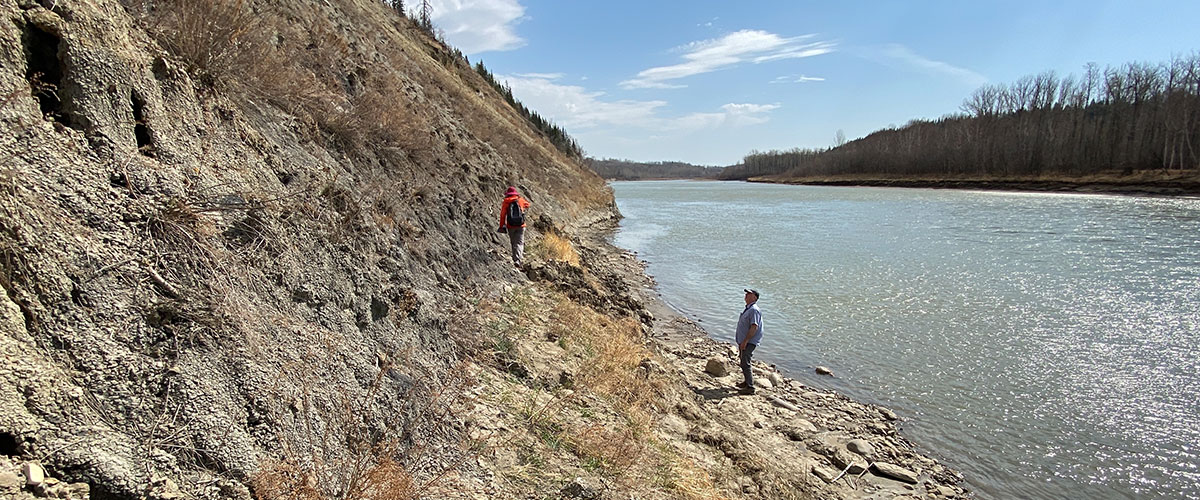A Modern-day Mammoth Search Party
June 21, 2023
by Julie Helwig, Communications Officer
When you think of a museum curator, you might envision them tucked away deep within the museum’s walls, surrounded by historic objects. This image may be accurate for a portion of our curators’ time, but as researchers they also get to spend some of their time out in the field.
Take, for example, our Quaternary Palaeontology team. Recently they were contacted by a local who stumbled across a strange object while out walking her dog. This big find turned out to be a partial shoulder blade from a mammoth, and partial skull of a Bison antiquus, both of which might be around 10,000-14,000 years old!
Our palaeontologists knew right away that it would be important to visit the discovery site to look for similar fossils nearby. If it turned out there were more mammoth remains in that area, it would be a big discovery that could tell us a lot of new information about where and when these creatures roamed Alberta. The first step was to organize a field team.
It’s helpful to remember here that fossils aren’t created in a vacuum; they’re found in environments that have continued to grow and change over the many years the bones have spent in place. There are any number of factors, both environmental and human, that could be important clues in piecing together a specimen’s story.
Thus, the field team for this outing included members of both our Quaternary Palaeontology department, as well as Archaeology staff who could keep an eye out for any evidence of ancient human activity. A few members of our Education and Marketing teams tagged along to learn more, and we were joined by staff members from Lafarge, who owned the gravel pit nearby to where the remains were found.

With a roster settled, and the appropriate permissions obtained from landowners, the team set out to see what they could find! Their trek started out west of the city along the North Saskatchewan River. While the walk started out relatively easily, hiking along an old service road, the team quickly found themselves bushwhacking through thick brush and forest growth, navigating steep embankments, and at times, even wading knee deep in the river for a roughly 2 km hike to the discovery site.
|
Image
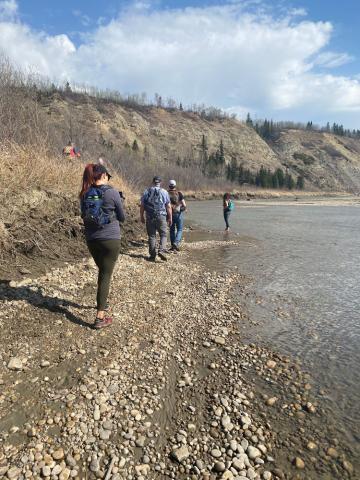
|
Image
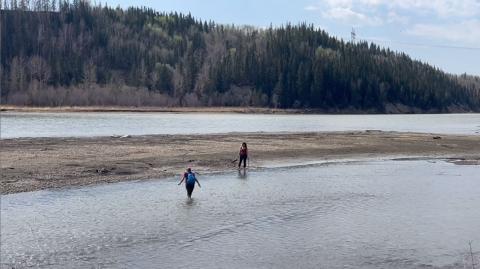
|
Image
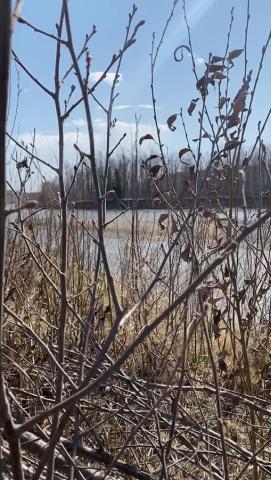
|
Once at the site, the team began scouring the area for any evidence of additional fossils, including scaling some steep terrain!
|
Image
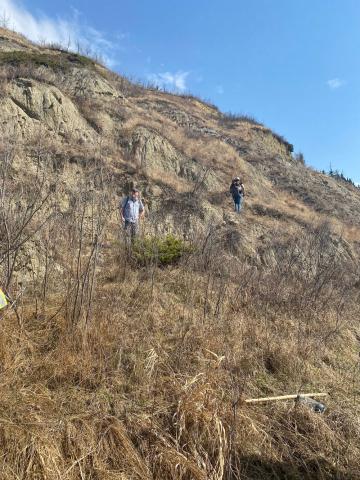
|
Image
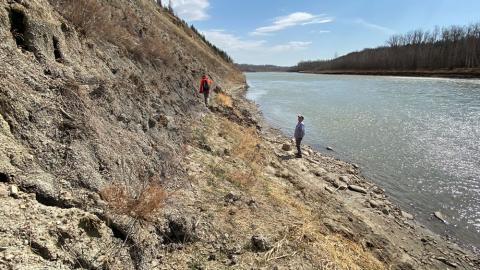
|
Ultimately, it was determined there weren’t likely to be be additional deposits with Ice Age fossils. The embankment consisted of Cretaceous-age bedrock, with only a small exposure of younger soils at the top. The Ice Age fossils and the bedrock are separated by ~65 million years in time, suggesting that the younger, Ice Age fossils have origins upstream.
|
Video file
|
While they didn’t end up finding any fossils, the day wasn’t a total loss. Along the way the team encountered some interesting objects including a moose skull, a bird’s nest, a frog, and some neat animal tracks. More importantly, the visit tells our palaeontologists that they need to look elsewhere for the origins of the Ice Age bones.
|
Image
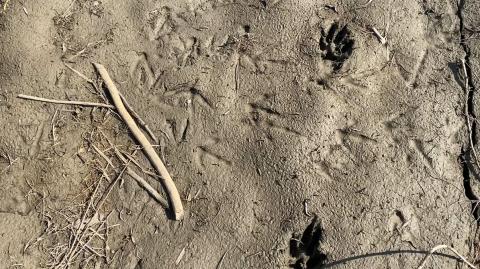
|
Image
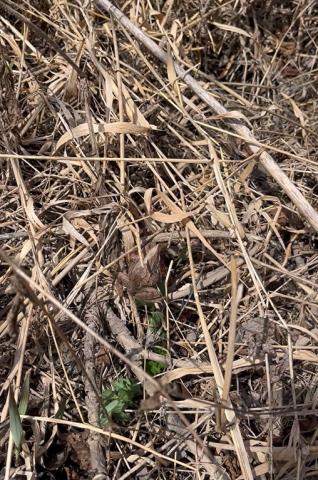
|
|
Image
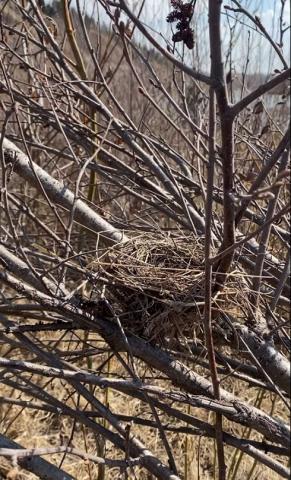
|
Image
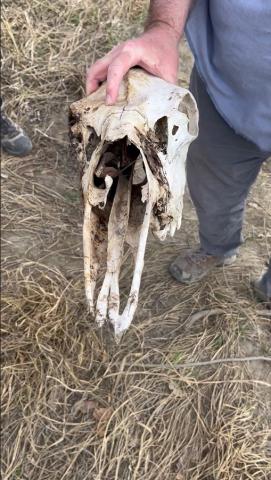
|
Archaeological sites and fossils are protected by the province through the Historical Resources Act. If you think you’ve found a fossil or artifact, get in touch with RAM right away, either through our website, or give us a call. You can also contact our colleagues at the Royal Tyrrell Museum of Palaeontology.
If you find a fossil or artifact, remember, the location is as important as the object itself. Here are some steps you can follow that will help our experts in studying an object.
- Photograph the object and note any visible features (for scale, include a coin or pen).
- Locate it on a map using permanent landmarks (use GPS if available).
- Leave it buried. It is unlawful to excavate fossils in Alberta. Additionally, Fossils (buried or on the surface) in provincial parks and other protected areas cannot be collected.
- Report the find. Reach out the Royal Alberta Museum, or the Royal Tyrell Museum. Include your first and last name, telephone number, email address, the location of the find (with GPS coordinates, if possible), and a photograph of the object.
This additional information can help palaeontologists and archaeologists make amazing discoveries. You could make an important contribution to science by reporting information about an artifact or fossil!
